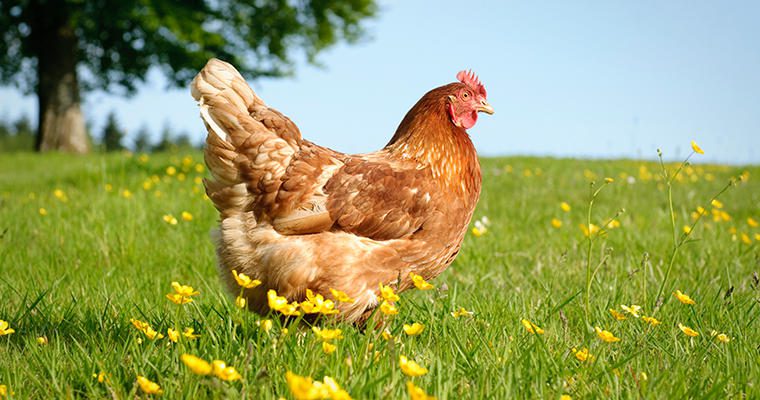Today’s consumers want to know more about the food they consume. Where does it come from? How was it grown and processed? How “clean” is it—have any ingredients been added to it before or after harvest? Foodservice operators are well advised to determine what food attributes are important to their customers and choose products accordingly.
Understanding commonly used poultry labels will not only guide your buying choices, it can also assist you in marketing your dishes to customers.
Federally regulated chicken labels
The United States Department of Agriculture (USDA) has established the standards, processes and enforcement procedures for chicken sellers using the following labels. Chickens must be raised and processed in a manner that complies with USDA regulations in order for sellers to use these terms—or they will face legal consequences. That means you can be confident in the accuracy of these claims on labels.
- Free Range. This claim certifies that the chicken was allowed access to the outdoors for a portion of the day. The USDA has no requirement for the amount of time the chicken enjoys outdoor access each day.
- Natural. A “natural” chicken has no artificial ingredients or added color, and it has been only minimally processed. Minimal processing means that the product was processed in a manner that does not fundamentally alter it.
- No Antibiotics Ever (NAE). This phrase can be used on poultry labels if the producer has supplied the USDA with sufficient documentation that the birds have never received antibiotics for any reason. Sellers also use the terms “never ever,” “no antibiotics added,” and “raised without antibiotics (RWA)” to mean the same thing.
- No Hormones or Steroids. The USDA has banned all hormones and steroids in poultry since the 1950s, so this claim applies to every chicken produced in the U.S. The claim cannot be used on packaging unless it is followed by a statement that says “Federal regulations prohibit the use of hormones.”
- USDA Organic. Organic certification verifies that birds have been raised according to USDA organic regulations throughout their lives. These regulations include a prohibition on antibiotics, the maintenance of free-range standards and a strict reliance on feed that has been organically grown without synthetic pesticides or fertilizers. This latter practice also allows sellers to use the term “non-GMO,” meaning no genetically modified ingredients were used in raising the birds. Remember that the non-GMO claim refers to feed, not chickens—all chickens are non-GMO.
Both “No Antibiotics Added” and “USDA Organic” claims typically translate into premium prices, so operators may have to decide whether the higher cost is worth it to their customers.
Potentially confusing chicken labels
In the quest to rise above a flock of competitors, some poultry sellers may make claims that are more marketing tactic than useful differentiator. It’s not that these claims are false—it’s just that they need to be understood in context.
- Antibiotic-free. This claim does not mean the same thing as No Antibiotics Ever. Rather, it refers to the federal law mandating that all chickens must undergo a minimum 14-day withdrawal period between the last day antibiotics are administered and the harvest date. Because all producers must follow this law, all chickens in this country can technically be considered antibiotic-free.
In contrast, the No Antibiotics Ever claim signifies that no antibiotics have ever been used, for any reason, from birth to harvest. If an NAE chicken falls ill and needs to be treated with antibiotics, it is removed from its NAE flock and moved to a non-NAE flock.
- Cage Free. This term refers only to chickens raised for eggs, not chickens raised for consumption. It should not appear on labels for chicken meat.
- Non-GMO. All chicken is technically free of genetically modified ingredients. If a company markets its chicken as non-GMO, it means that the chicken feed they use has been organically grown without synthetic pesticides or fertilizers, in accordance with USDA regulations. The company certifies that this feed has not been cross-contaminated with GMO feed.











